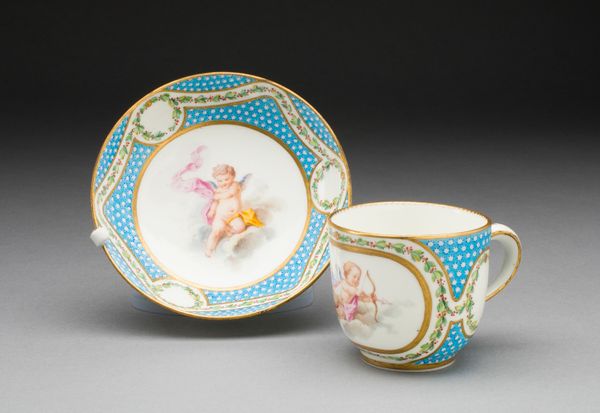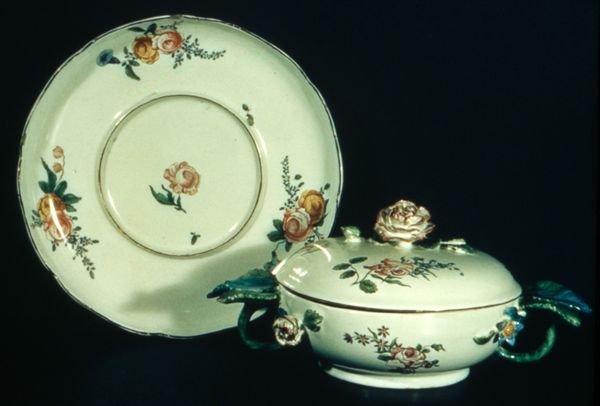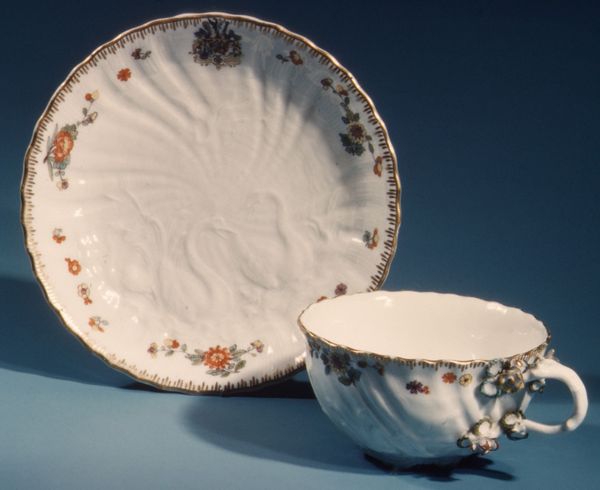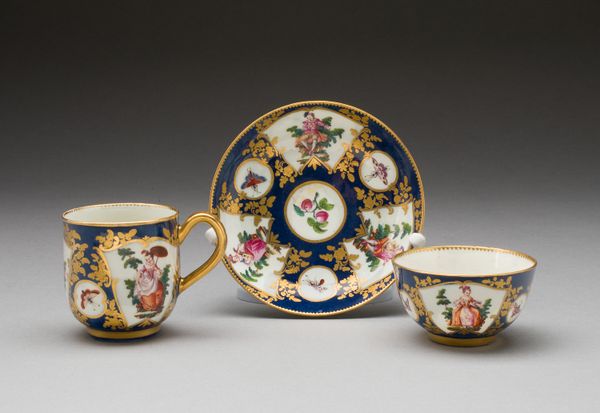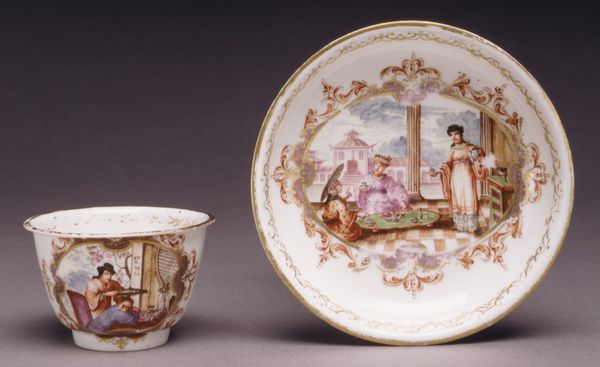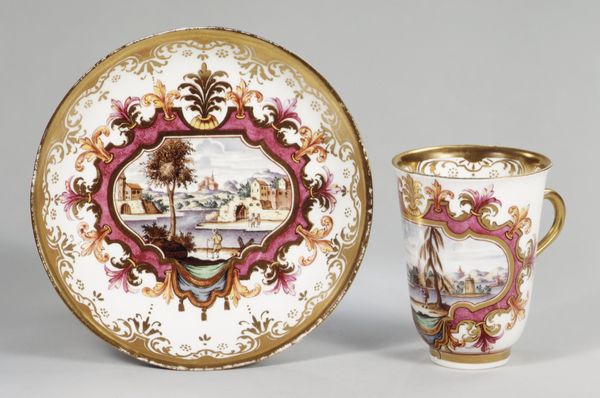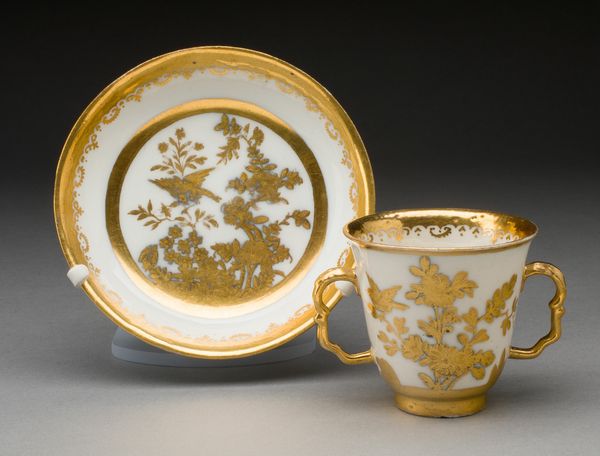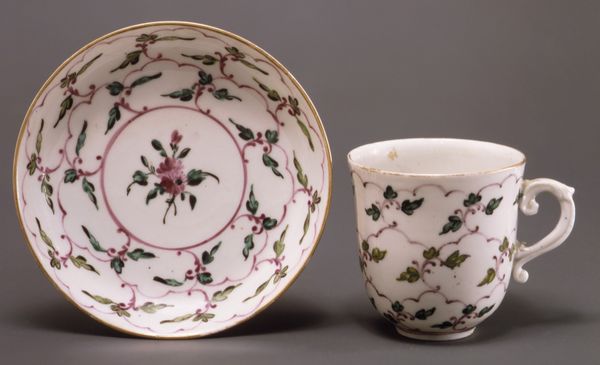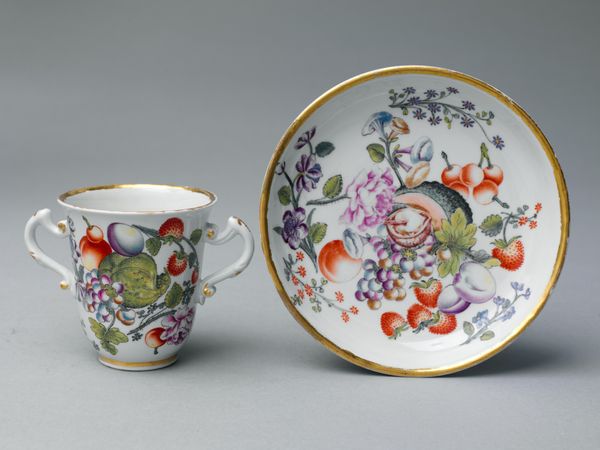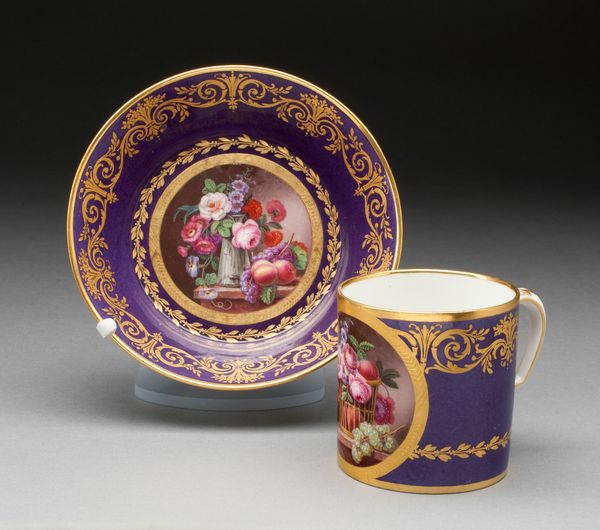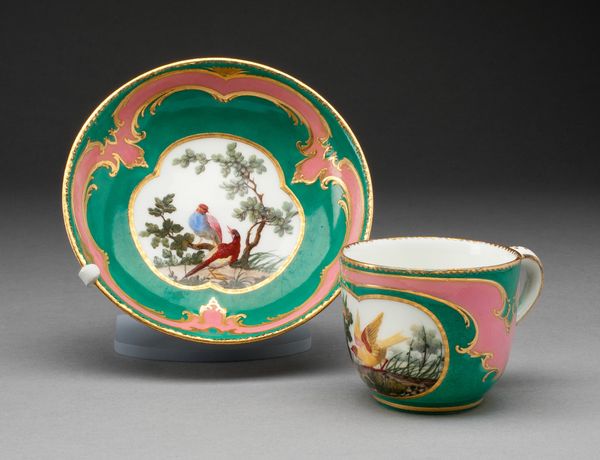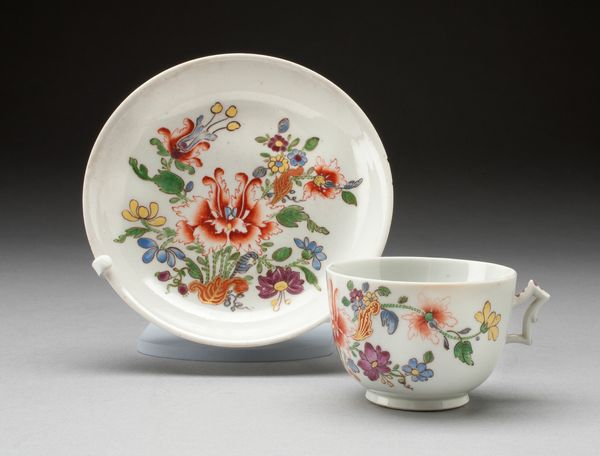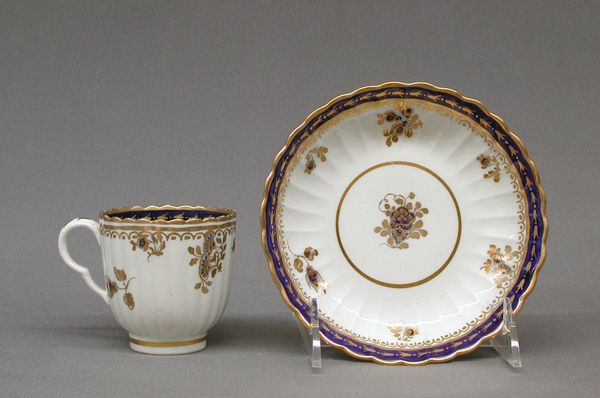
Dimensions: 1 5/16 x 5 5/16 x 5 5/16 in. (3.33 x 13.49 x 13.49 cm)
Copyright: Public Domain
Curator: Good morning. We’re here to discuss a “Saucer,” created between 1770 and 1774 by the Sèvres Porcelain Factory, now held at the Minneapolis Institute of Art. The medium, of course, is porcelain. Editor: It strikes me as undeniably lavish, but also contained. There's a controlled elegance about the floral patterns and the use of circular medallions, as if trying to restrain excess within a defined structure. Curator: That resonates with the Rococo style prevalent at the time, characterized by ornamentation and asymmetry, yet always meticulously balanced. The very materiality of porcelain suggests status. Only a certain class could have had it at home. Editor: So, objects like this are really tools to reinforce the structure of class at that time. How does something seemingly delicate like this saucer act as such? Curator: Absolutely. Porcelain was a luxury item. Owning a Sèvres piece signaled not only wealth but refined taste and participation in a culture of courtly elegance. Consider also the themes of love and leisure evoked by the imagery on the saucer. It represents a specific social ideal and the rituals associated with it, from teatime to dessert to displaying status in daily life. Editor: The depictions are subtle but speak volumes—small, carefully painted vignettes in these golden lockets. And then we have the garland of roses, a pretty but potentially political ornamentation. Curator: Indeed, the rosy patterns surrounding each of the artwork’s lockets lend an overall harmonious balance. The porcelain base acts as the perfect support that emphasizes the rosy garlands, making each form stand out on its own merit. Editor: Considering this saucer's material value, one can begin to comprehend how social and economic classes have historically influenced the production of artworks, thus embedding messages within forms of design. Curator: Exactly, this saucer provides a fascinating snapshot into the opulent tastes and social stratifications of the late 18th century in Europe. Editor: I see a lot more beneath the gilded surface. I suppose one finds elegance in the story an artwork can convey. Curator: Precisely. Hopefully, our exploration provides deeper engagement beyond its obvious appeal.
Comments
No comments
Be the first to comment and join the conversation on the ultimate creative platform.
